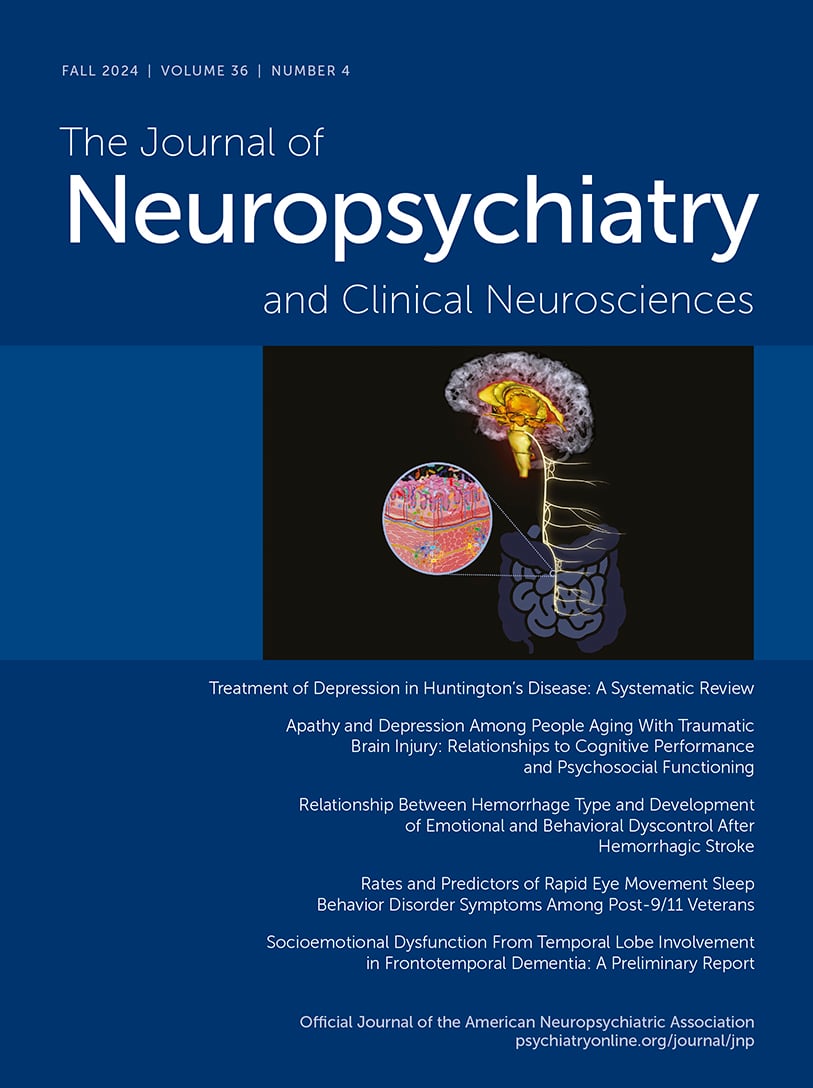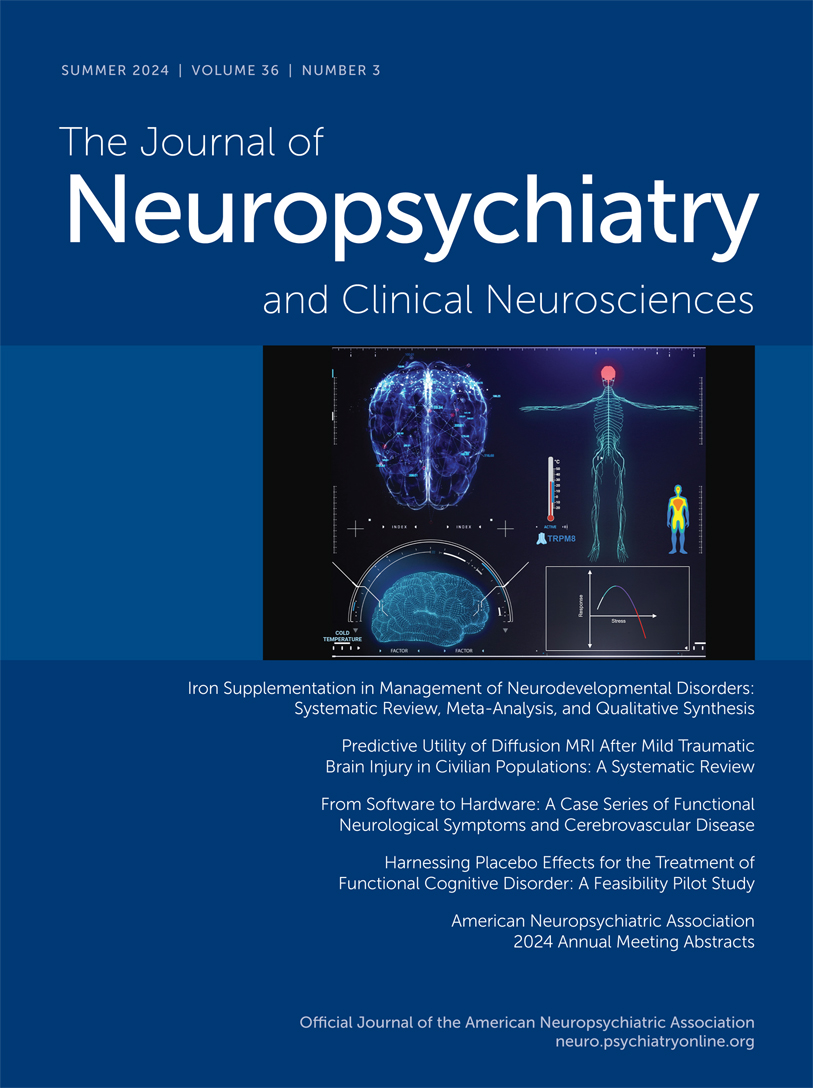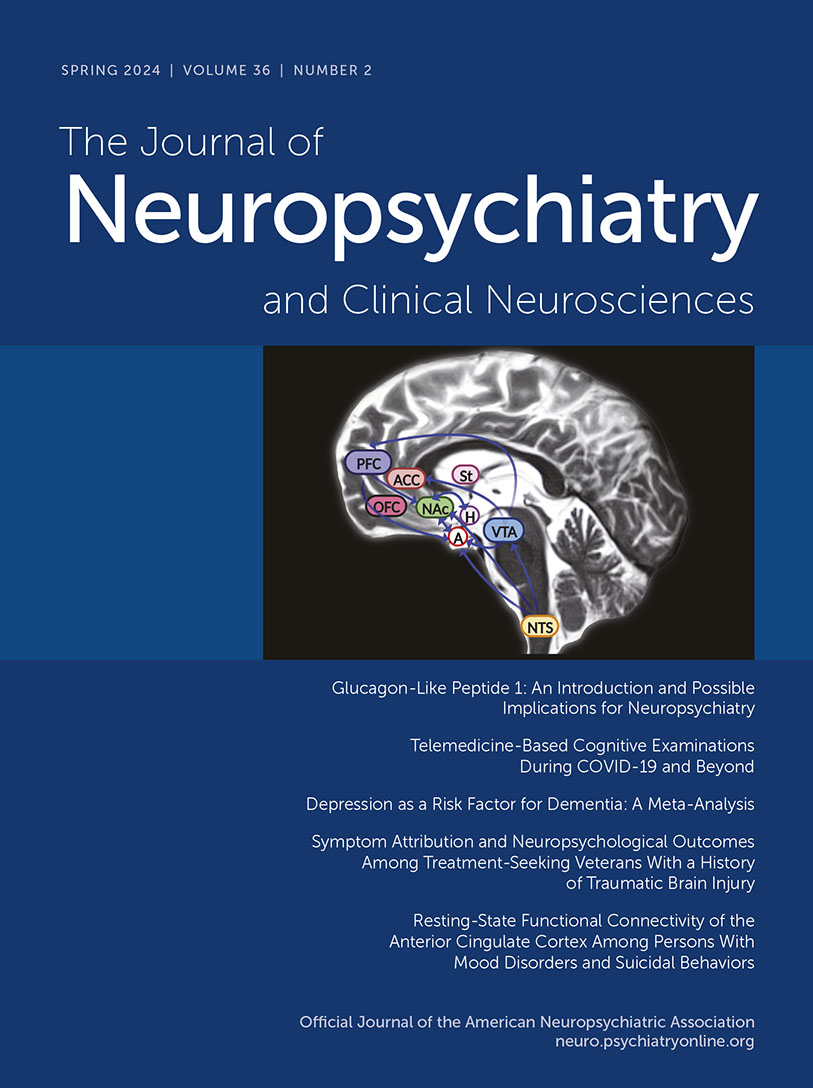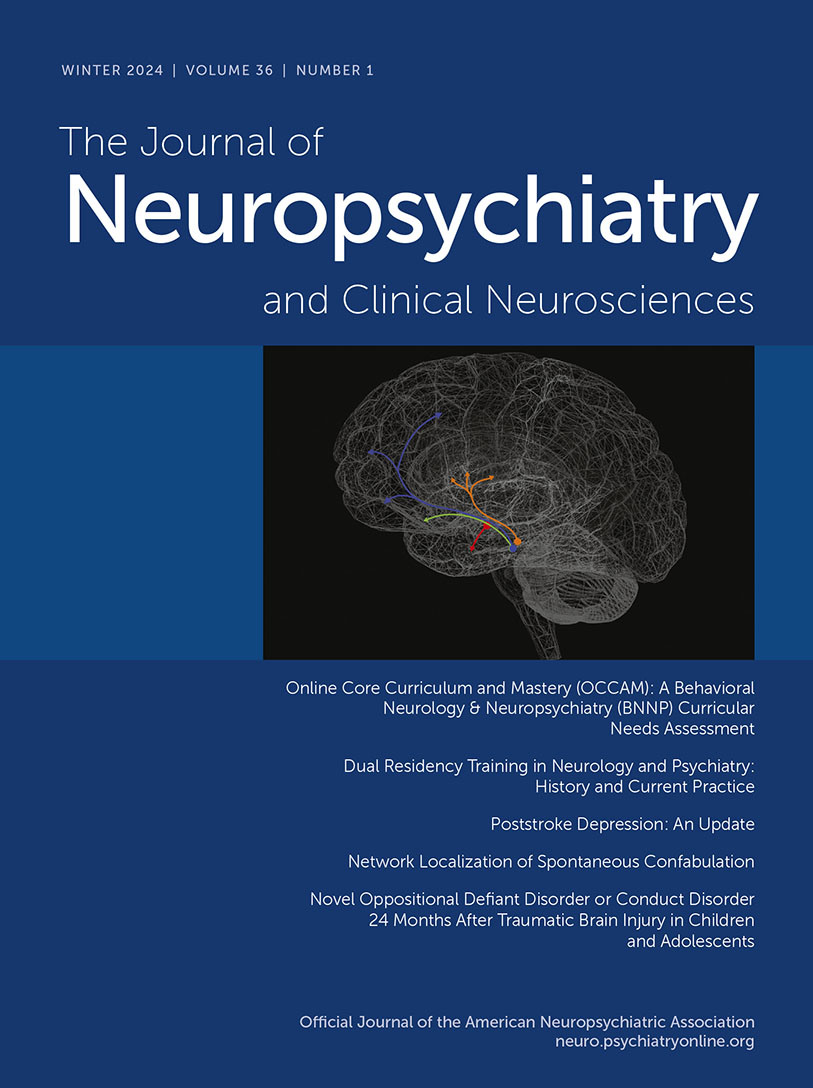The Journal of Neuropsychiatry and Clinical Neurosciences
- Volume 29
- Number 4
- October 2017
Windows to the Brain
Special Articles
Publication date: 16 May 2017
Pages308–318Toxic leukoencephalopathy (TL) is a disorder of brain white matter caused by exposure to leukotoxic agents. Magnetic resonance imaging (MRI) can readily identify this syndrome, and, together with diffusion tensor imaging, MRI continues to offer important ...
https://doi.org/10.1176/appi.neuropsych.17010006Regular Articles
Publication date: 17 April 2017
Pages319–325The authors investigated retrospective timing in participants with Korsakoff’s syndrome. Patients were assessed on four retrospective tasks on which they were instructed to read three-digit numbers aloud (15 seconds), fill connected squares (30 seconds), ...
https://doi.org/10.1176/appi.neuropsych.16100206Publication date: 03 May 2017
Pages326–333The authors’ aim was to investigate the modulation of event-related potentials (ERPs) by the affective content of stimuli in adult attention deficit hyperactivity disorder (ADHD) patients during error monitoring. By obtaining ERPs from 26 adult ADHD ...
https://doi.org/10.1176/appi.neuropsych.16100183Publication date: 31 May 2017
Pages334–342Few studies have examined clinical correlates of aggression after first-time traumatic brain injury (TBI) within the first year after injury. The authors aimed to identify the rates of aggression at 6 and 12 months post-TBI and establish clinical and ...
https://doi.org/10.1176/appi.neuropsych.16050088Publication date: 28 April 2017
Pages343–350Brain functional integration can be disrupted in patients with temporal lobe epilepsy (TLE), but the clinical relevance of this disruption is not completely understood. The authors hypothesized that disrupted functional integration over brain regions ...
https://doi.org/10.1176/appi.neuropsych.16100216Publication date: 03 May 2017
Pages351–356Behavioral variant frontotemporal dementia (bvFTD) is a neurodegenerative disorder with initial disturbances in socioemotional behavior in the absence of a sensitive diagnostic test. This study evaluated Pavlov’s “orienting response” (OR) or “what is it?” ...
https://doi.org/10.1176/appi.neuropsych.17020035Publication date: 17 April 2017
Pages357–364Cognitive dysfunction and anhedonia, the reduced ability to experience pleasure, are commonly comorbid symptoms that are persistent following successful resolution of negative affect in major depressive disorder (MDD). Little is known about whether they ...
https://doi.org/10.1176/appi.neuropsych.16090171Intrathecal Thyroid Autoantibody Synthesis in a Subgroup of Patients With Schizophreniform Syndromes
Publication date: 28 April 2017
Pages365–374Schizophreniform syndromes in combination with autoimmune thyroiditis and increased serum thyroid antibodies lead healthcare practitioners to consider a diagnosis of Hashimoto’s encephalopathy. To detect specific biomarkers, the authors analyzed whether ...
https://doi.org/10.1176/appi.neuropsych.16110296Publication date: 28 April 2017
Pages375–382The assessment of functional neurological disorders (FND) requires an interdisciplinary approach. The authors retrospectively reviewed charts for 100 outpatients with FND and used univariate and regression analyses to investigate neuropsychiatric ...
https://doi.org/10.1176/appi.neuropsych.16110302Publication date: 31 May 2017
Pages383–390The aim of this study was to compare anorexia nervosa (AN) patients and functional motor symptoms (FMS) patients by assessing their variability in demographic and clinical characteristics, risk factors, precipitators, and family history. The authors ...
https://doi.org/10.1176/appi.neuropsych.16080156Clinical and Research Reports
Publication date: 03 May 2017
Pages391–400The authors retrospectively evaluated effectiveness and tolerability of cannabis in 19 adults with Tourette syndrome. Tics scores decreased by 60%, and 18 of the 19 participants were at least “much improved.” Cannabis was generally well tolerated, ...
https://doi.org/10.1176/appi.neuropsych.16110310Case Reports
Departments
Past Issues
View Issues Archive
Vol. 36 | No. 4

Vol. 36 | No. 3

Vol. 36 | No. 2
